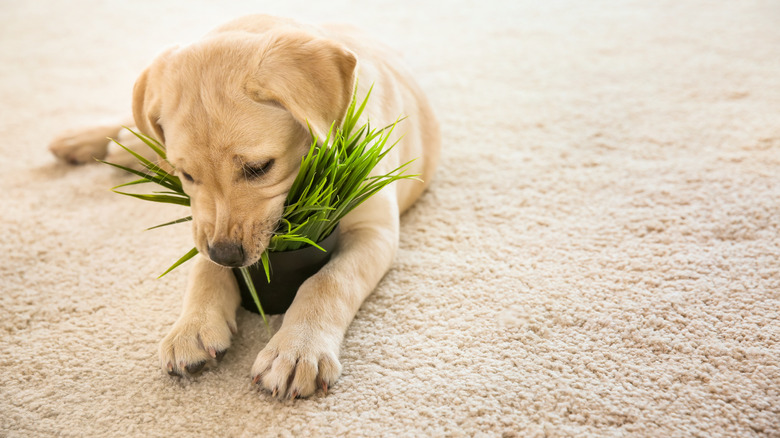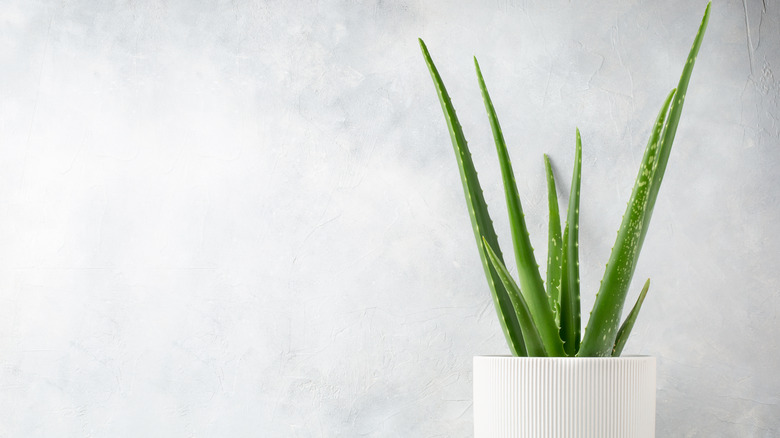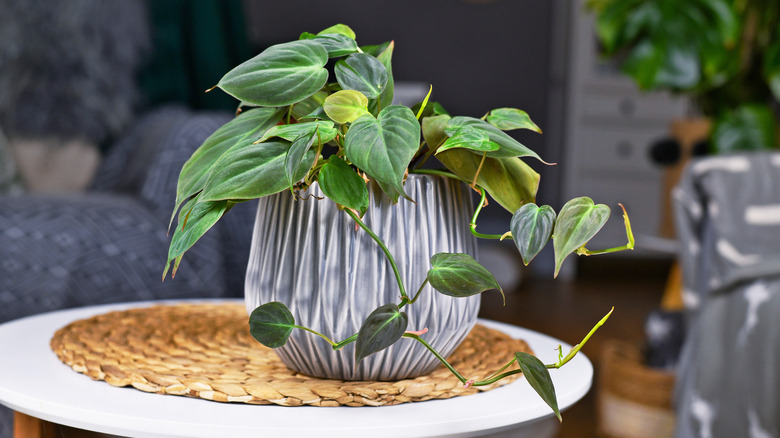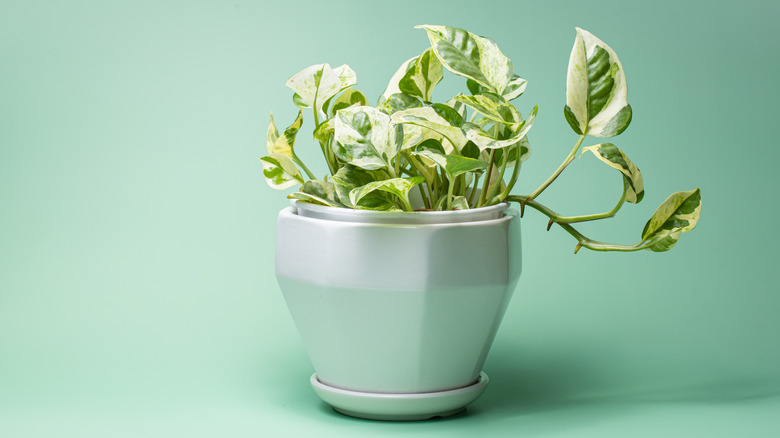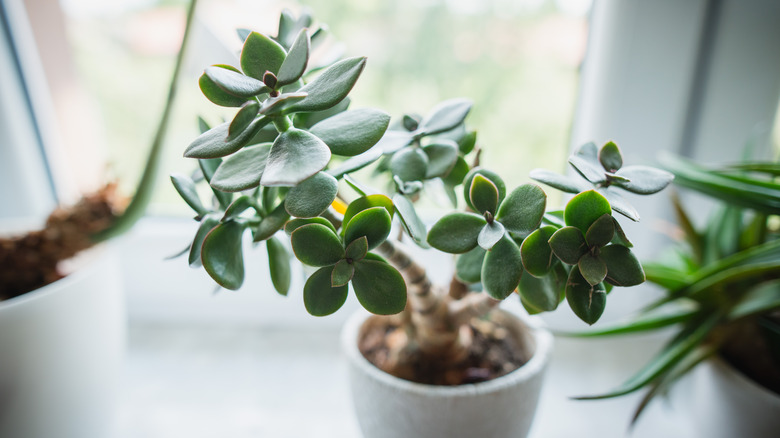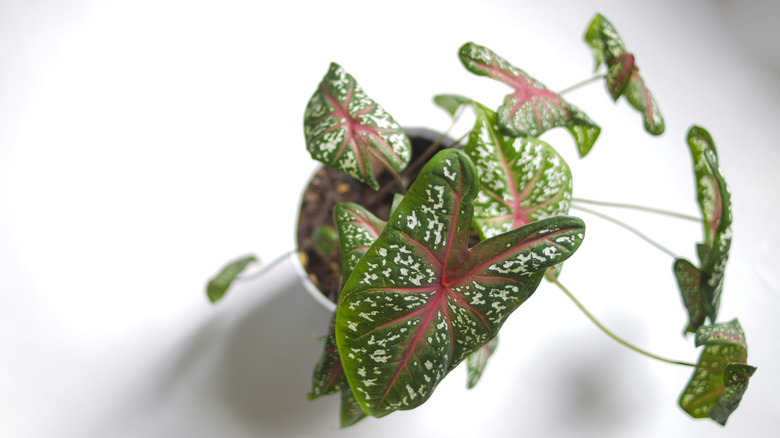The Houseplants You Should Avoid If You Have Dogs
Houseplants are a great way to bring a little bit of nature into your home. They improve air quality and have a number of other health benefits, including reducing stress and improving focus. That's not to mention that they brighten up every room and they're very trendy at the moment. Unfortunately, however, some of the most popular and common houseplants can be toxic for dogs if ingested.
While most of these plants aren't fatal, they can cause gastrointestinal issues as well as a wide range of other symptoms, which may be serious. If you already have any of these plants in your home, be sure to place them up high where they'll be out of reach of your furry friends. If your dog consumes any of these plants, be sure to contact your veterinarian immediately if it displays any symptoms. Read on to learn about the five houseplants you should avoid if you have dogs.
Aloe vera
Aloe vera is one of the most popular indoor succulents. It's easy to grow and requires indirect sunlight. Plus, the gel inside the leaves is a common folk remedy for healing minor cuts and burns. But, while aloe has a number of medicinal uses for humans, it's mildly to moderately toxic for dogs.
According to the ASPCA, aloe is toxic for both dogs and cats and can cause vomiting, lethargy, and diarrhea. "Aloes contain anthraquinone glycosides, which are purgatives (medications that encourage bowel movements)," according to Pet Poison Helpline. This is what causes gastrointestinal distress in pets.
The same effects may also occur if humans ingest the plant, so make sure to use the gel for external use only. In fact, until 2002, when the Food and Drug Administration deemed it unsafe, aloin, a compound found in some species of aloe plants, was used as an ingredient in laxatives.
Philodendron
Philodendrons are one of the easiest houseplants to grow and make a striking visual statement with their long trailing vines. This genus of plants contains many different species that are frequently used as houseplants, including the heartleaf philodendron, blushing philodendron, and velvet-leaf philodendron. They're incredibly adaptable, and even individuals without green thumbs should be able to keep them alive and thriving.
Despite their low care requirements, philodendrons do have one major downside: They're toxic to dogs and cats. Philodendrons contain insoluble calcium-oxalate crystals, which may irritate the mouth if the plant is consumed. According to the Pet Poison Helpline, toxicity symptoms to beware of are "drooling, pawing at the mouth, oral pain, decreased appetite, and vomiting."
Though the symptoms are less severe, the crystals may have a similar effect if consumed by children, so it's best to keep philodendrons at a safe height where no little ones can access them.
Pothos
Technically named Epipremnum aureum and also known as devil's ivy, pothos plants are a favorite of many indoor gardeners due to their easy care requirements. They're a great option for areas that don't get much sunlight and can even survive in fluorescent lighting, according to The Spruce. Their heart-shaped leaves come in a variety of shades of green and yellow, and their vines can easily reach up to 30 feet when grown indoors.
Pothos plants are visually similar to many varieties of philodendron, and they also contain the same calcium oxalate crystals that make them toxic to some animals, including dogs. Consumption of pothos plants may result in side effects like "oral irritation; intense burning and irritation of mouth, tongue, and lips; excessive drooling; vomiting; and difficulty swallowing," according to the ASPCA.
Just like philodendrons, these should also be kept away from four-legged friends and young children alike to avoid ingestion.
Jade plant
Also known as a Chinese rubber plant or a Japanese rubber plant, the jade plant is part of the Crassulaceae family, which comprises 1,500 species of succulents. It's referred to as a "money tree" in some cultures and is thought to bring prosperity to anyone who owns one. It's an excellent houseplant for beginners because it can handle a little neglect, requiring minimal water and light.
Despite its popularity, however, it's best to be avoided by pet owners because of the toxic effect it can have on both dogs and cats. According to the ASPCA, the primary symptoms to look out for are "vomiting, depression, [and] incoordination." Wag Walking mentions additional symptoms, including aggression, slow heart rate, hiding, and even convulsions. Most reactions are relatively mild, and there have been no reported deaths from dogs ingesting jade plants.
Jade plants can also be toxic to humans if consumed, and, on rare occasions, can cause irritation simply through skin contact.
Caladium
You may know them as elephant's ears, angel wings, pink clouds, or malanga, but these pretty plants are technically called Caladium hortulanum or, simply, caladium. They are part of the Araceae family and make standout houseplants because of the bright red and pink leaves that many of their subspecies boast. In USDA hardiness zones 9 through 11, caladium can be grown outdoors, according to Garden Design. While caladium will add a pop of color to your home or landscaping, it's important to keep dogs, cats, and children away.
Just like some of the aforementioned plants, caladium leaves contain calcium oxalate crystals, which are toxic to both dogs and cats, causing skin irritation, difficulty swallowing, and mouth pain and swelling, according to the ASPCA.
Be sure to keep these plants away from children, too, because they're toxic to humans if consumed, though not deadly. The sap found on caladium stems and leaves may also cause skin irritation, so be mindful to wear gloves when handling or repotting these plants.
